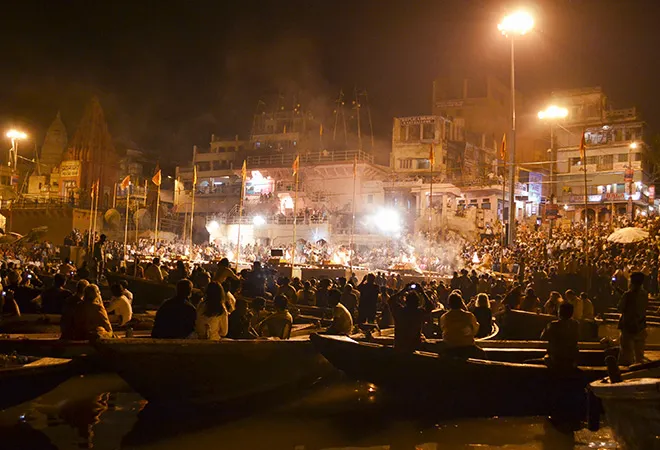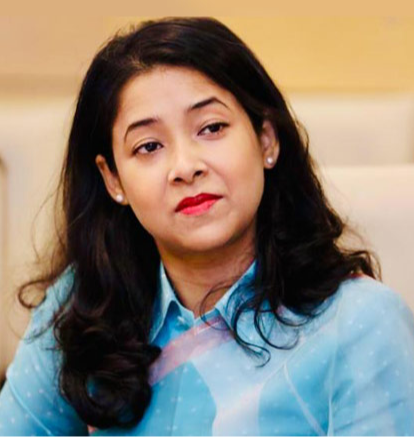-
CENTRES
Progammes & Centres
Location
'Power to All’ was a great goal set by the Prime Minister. However, whether he will have the ‘saubhagya’ to capitalise on the success of the scheme for an election upside will be clear from the results.

In the current elections, the Modi government is showcasing its ‘success’ in reaching 24×7 power to all in the country through its flagship programme, Pradhan Mantri Sahaj Bijli Har Ghar Yojana or Saubhagya. The Centre claims to have already achieved 100% electrification in 99.93% of households with only about 0.07% remaining in Chhattisgarh. While the government is set to achieve its target, the question we must ask: Does merely providing free electricity connections to every poor household mean a ‘successful’ realisation of reliable, affordable, equitable and sustainable energy access to all?
The Centre claims to have already achieved 100% electrification in 99.93% of households with only about 0.07% remaining in Chhattisgarh.With a budget outlay of Rs 16,320 crore, Saubhagya aims to compensate the infrastructure drawbacks of predecessor schemes such as DDU-GKY and IPDS. Yet, it does very little to address the structural issues that plague India’s broken power sector.
The states-run power distribution companies (discoms) have remained the highest loss making public entities in the country. Despite a massive financial restructuring under the Ujwal Discom Assurance Yojana (Uday), covering 97% of their total outstanding debt, discoms continue to incur significant losses. In the first half of FY 2018-19 they suffered a combined loss of Rs 15,080 crore, surpassing figures reported in the entire 2017-18 fiscal.
Providing free electricity connections to 3.63 crore households under Saubhagya would raise discoms’ supply cost further by Rs 32,200 crore, thereby adding approximately Rs 3,800 crore to their annual losses. Moreover, a rapid pace of implementation to meet ambitious electrification targets does not provide them adequate time for due diligence and careful planning of resource requirements. Large amounts of power distribution assets might get stranded, leading to significant economic losses.
Providing free electricity connections to 3.63 crore households under Saubhagya would raise discoms’ supply cost further by Rs 32,200 crore, thereby adding approximately Rs 3,800 crore to their annual losses.Since the distribution sector generates revenue for the entire electricity value chain, its poor financial health significantly impacts generation and transmission. Despite India being the world’s third largest power generator after China and the US, its power generation utilities are vastly under-utilised. A decline in demand for electricity from state discoms in tandem with their deteriorating financial status has led to a significant plunge in the plant load factor (PLF) – an indicator of capacity utilisation of power generation units.
Despite India being the world’s third largest power generator after China and the US, its power generation utilities are vastly under-utilised.According to data from the Central Electricity Authority, PLF has dropped consistently over the decade from 77.5% in 2009-10 to 65.33% in 2017-18. Lack of profitable returns disincentivises discoms to demand more electricity from power generators. Consequently, they fail to provide uninterrupted, quality power across large parts of India. Ironically, more than a third of the population of this power surplus country still lives without power. A 2017 survey of rural households in UP, for instance, found an average electrified household receives only about 13 hours of power, which goes below 10 hours in the monsoon.
Lack of profitable returns disincentivises discoms to demand more electricity from power generators. Consequently, they fail to provide uninterrupted, quality power across large parts of India. Ironically, more than a third of the population of this power surplus country still lives without power.India has an installed power generation capacity of about 344.69 GW, with peak generation unlikely to cross 180 GW this year. Saubhagya should create a framework to pool the stranded generation capacity through centralised power purchase agreements (PPAs) and assigning costs to state discoms. In the absence of quality electricity supply, poor households may find free connections unattractive and continue to rely on conventional energy sources like kerosene and biogas, or steal electricity from the grid.
The aggregate losses of discoms due to power theft and collection inefficiency stood at 19.72% of electricity purchases, according to the latest Uday data for 26 states. Saubhagya has the opportunity to fast-track the reform process in the distribution sector by rationalising electricity tariffs without political interference and ensuring reduction of losses due to rampant power theft and collection inefficiency. Ensuring implementation of a ‘smart model’ using Internet of Things that entails installing smart electricity meters storing and communicating information to a central server, and developing a smart-grid network tied to a dynamic tariff, would incentivise consumers and improve operational efficiency.
Saubhagya has the opportunity to fast-track the reform process in the distribution sector by rationalising electricity tariffs without political interference and ensuring reduction of losses due to rampant power theft and collection inefficiency.While free connections and improved supply would increase poor households’ access to electricity, it would not ease the recurring burden of power bills. Saubhagya therefore must create income generating opportunities that allow consumers to afford their electricity usage. Ensuring an adequate and affordable electricity supply for home-based micro-enterprises such as post-harvest processing and produce, and decentralised renewable energy solutions would directly bring socio-economic benefits to the disadvantaged communities.
‘Power to All’ was a great goal set by Prime Minister Narendra Modi. However, whether he will have the ‘saubhagya’ to capitalise on the success of the scheme for an election upside will be clear from the results.
This commentary originally appeared in The Times of India.
The views expressed above belong to the author(s). ORF research and analyses now available on Telegram! Click here to access our curated content — blogs, longforms and interviews.

Aparna Roy is a Fellow and Lead Climate Change and Energy at the Centre for New Economic Diplomacy (CNED). Aparna's primary research focus is on ...
Read More +